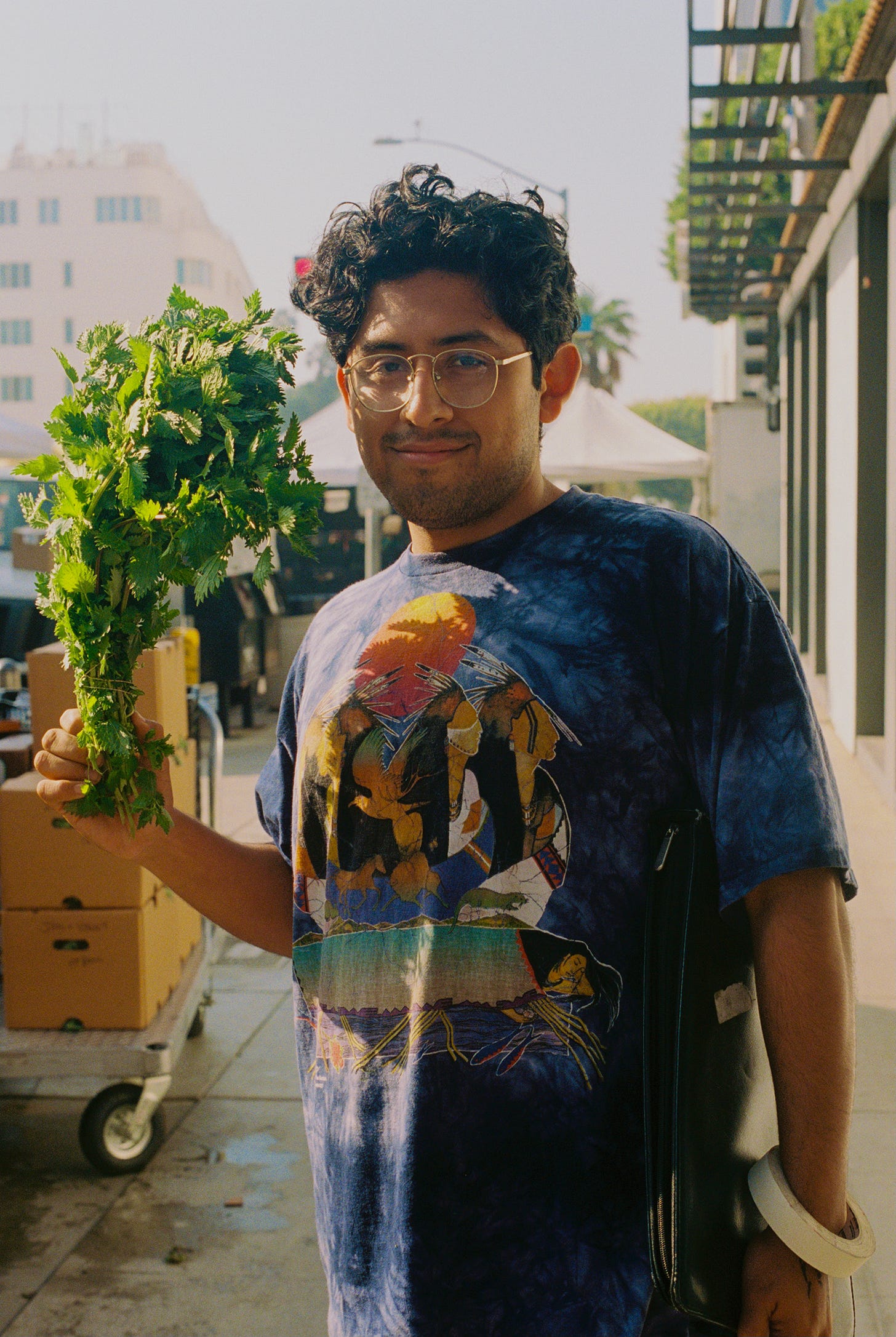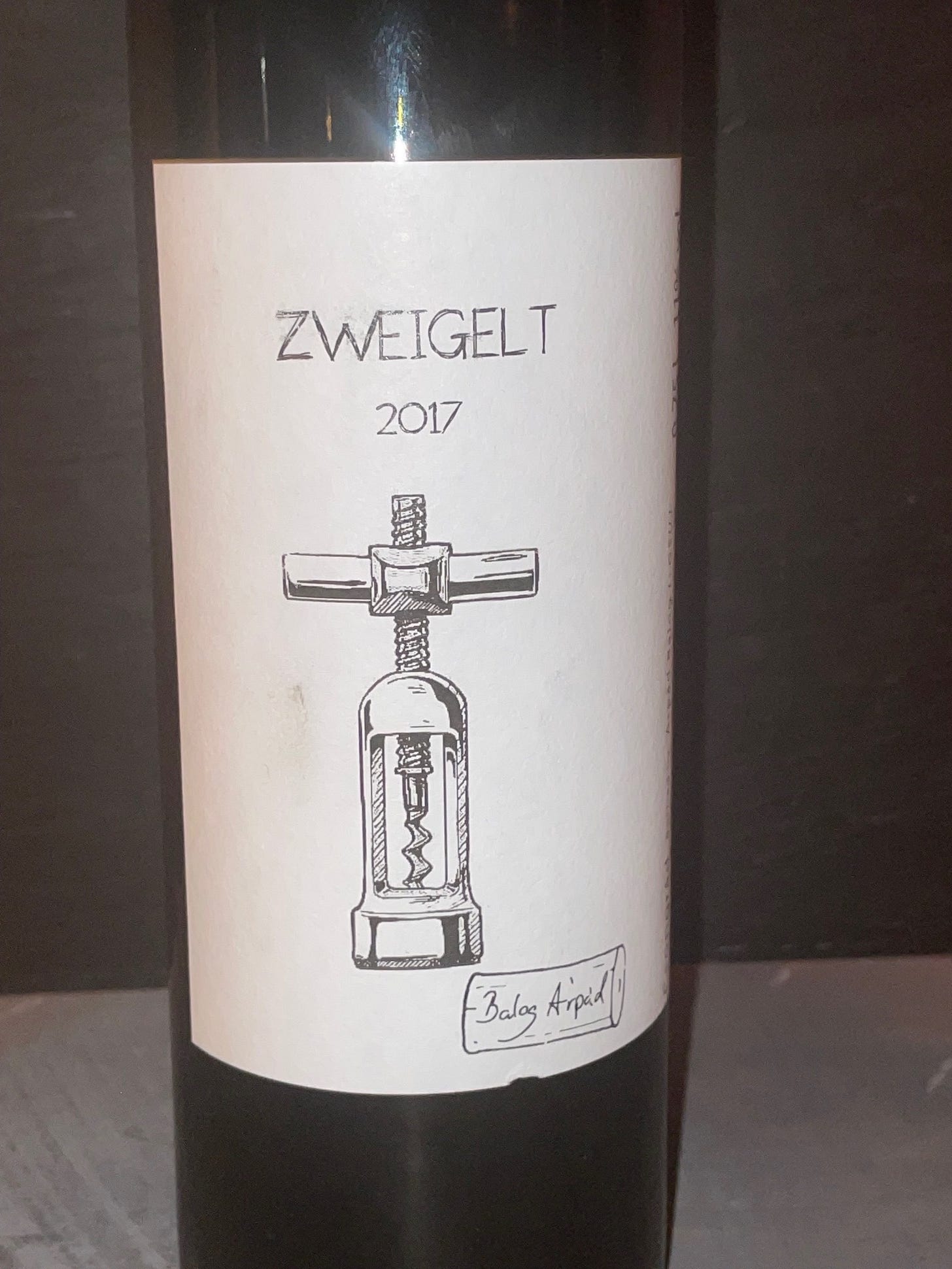Gjelina Group Goes to the Market
Stinging Nettle Season & Henry's Favorite Wine (These Days)
This Week at the Market
Written by Sam Rogers, Gjelina Group’s Farm Liaison
Ah - stinging nettles, my favorite misunderstood weed. They grow wild through much of the continental U.S., popping up on their own when the weather turns cold. That’s what Farmer James of Flora Bella likes about them, he says “Mother Nature does all the work. Every year she just gives them to me, she’s a sure bet!” Farmers who have lush patches of nettles with broad leaves forage them as a wild crop from their fields, where they grow alongside (or in between) rows of fall and winter vegetables.

Many people know them only from their sting, but less know of their flavor, which is verdant and mineral. They taste like a cross between spinach, cucumber and maybe nori. Farmer Peter Schaner likes them in polenta, “it’s fast and not dangerous!” or the dark fluorescent green tea they produce. They’re quite delicious, really, but only after exposure to heat of some kind. Nettles are covered in hollow “hairs” - little protrusions that act like needles, sending a complex of histamines into your skin which create that itching & burning sensation. Heat immediately causes those hollow hairs to collapse and also instantly neutralizes the irritants.
High in iron, calcium, other minerals, vitamin A and C, nettles have been used medicinally for millennia from the Egyptians to Native Americans, and Roman soldiers alike. At Gjelina, you can find them in the nettle rigatoni cacio e pepe, as well as the nettle pizza with raclette, leeks, and lemon zest. With the earthy nettles and gooey raclette, it’s like getting a hug from a pizza. At the upcoming Gjusta Grocer, you can find Schaner Family Farms' dried nettle tea.
Henry’s Favorite Wine of the Week: Arpad Balog Zweigelt
Written by Henry Beylin, Gjelina Group’s Wine + Beverage Director
This is the only Zweigelt I have ever cared for. It's from southern Hungary, a town named Csongrad, tucked into a corner where you can look into Serbia one way and spit into Romania the other way. Typically it's an Austrian grape. Their most widely planted grape, a fact which should not be celebrated. It did not exist until 1922. It's a cross of 2 other Austrian grapes, Blaufränkisch and Sankt Laurent. Both are admirable and we will hear from them soonish. The man responsible for inventing Zweigelt is Dr. Friedrich Zweigelt. He was a renowned scientist and also a Nazi. Some people prefer to call the grape Rotburger for this reason but this bottle uses Zweigelt so Zweigelt it is.
The grape is usually very fruity in an easy bubble gum sort of direction. High in acid, low in tannic structure with misplaced exuberance. It talks when it should listen. But look, it has it's fans. Don't let me tell you what you should like.
This one is different. It's complete, quiet and endearing. Southern Hungary is warmer than Austria to be fair. Zweigelt achieves full ripeness and maturity letting fleshy substance and texture hold the still bold fruit in check. Full flavored with black and purple fruit, exotic spice and high-toned freshness all soft, persistent and yes, fun.
Here I was ready to put this wine in a most ignominious setting but what a humbling surprise. It's good to be wrong.








